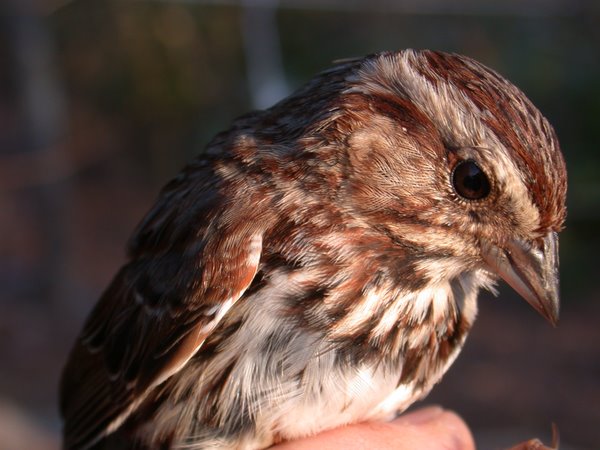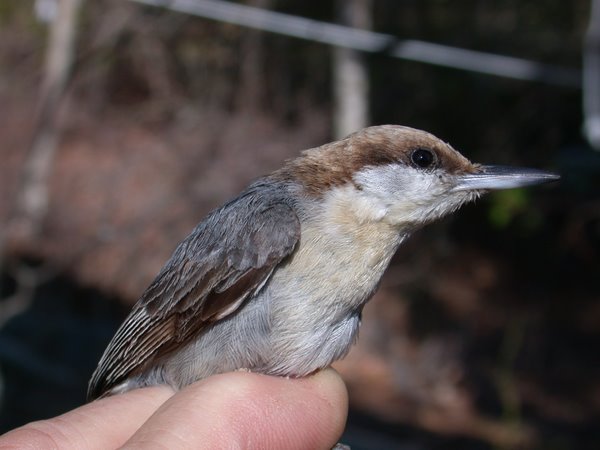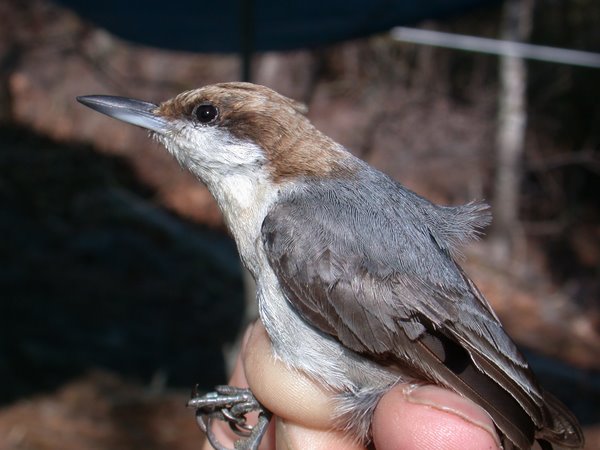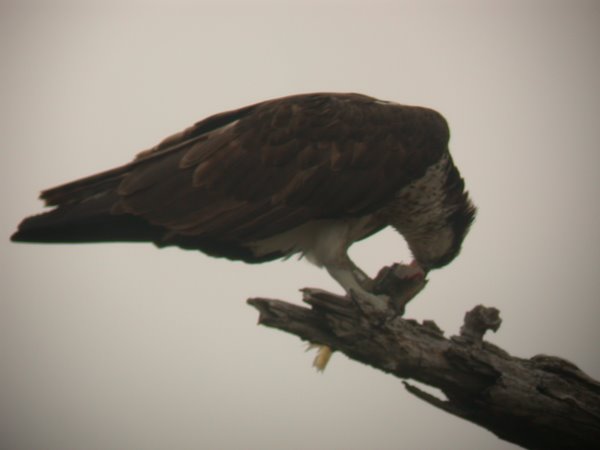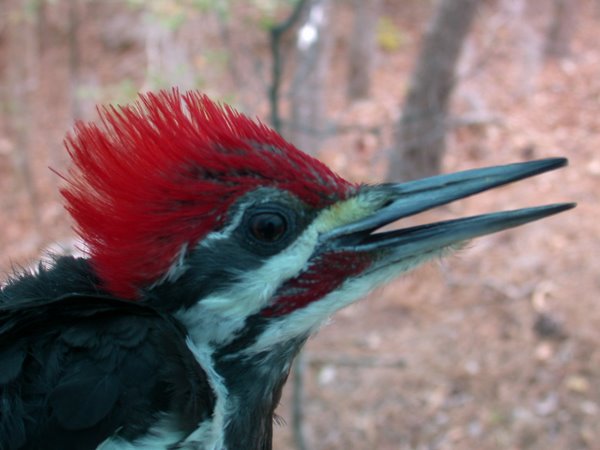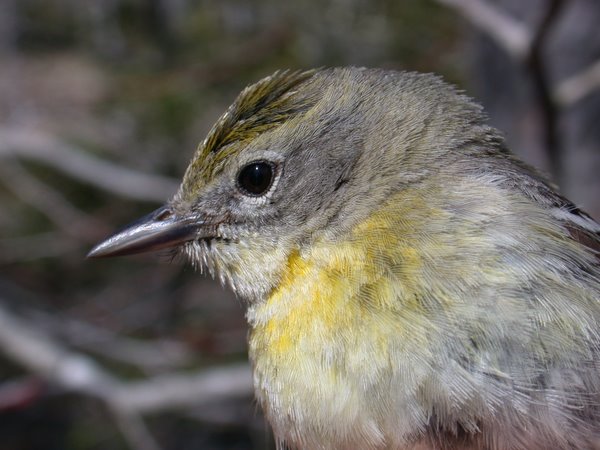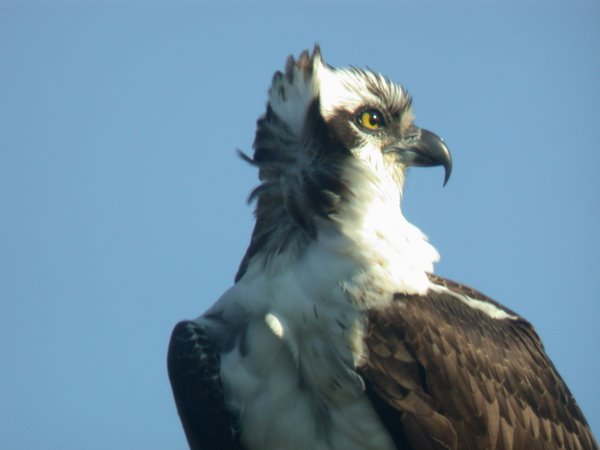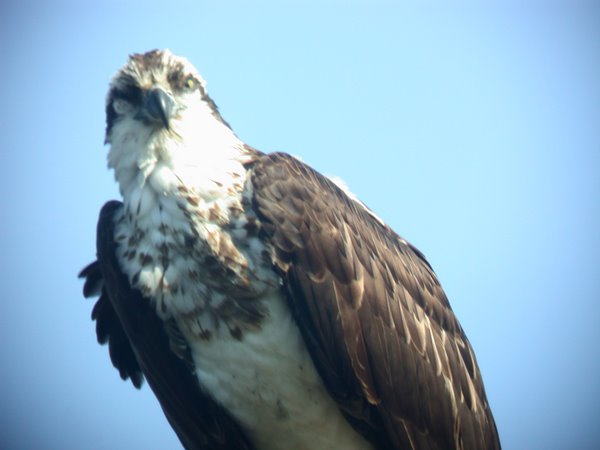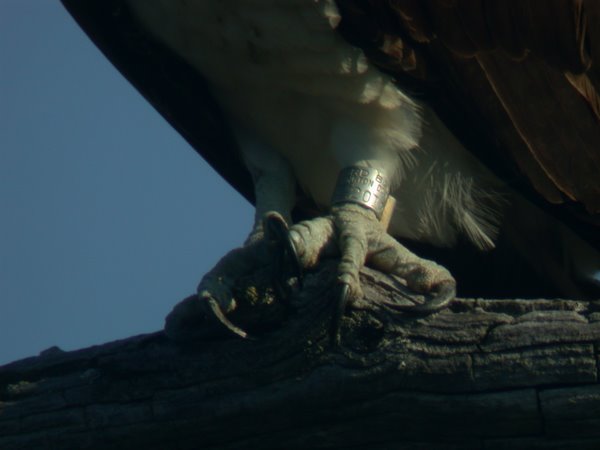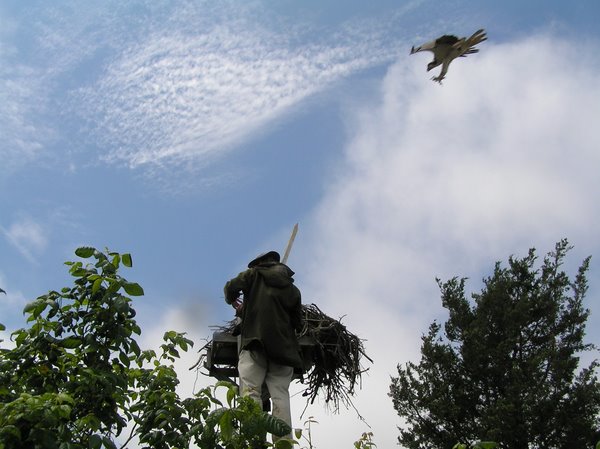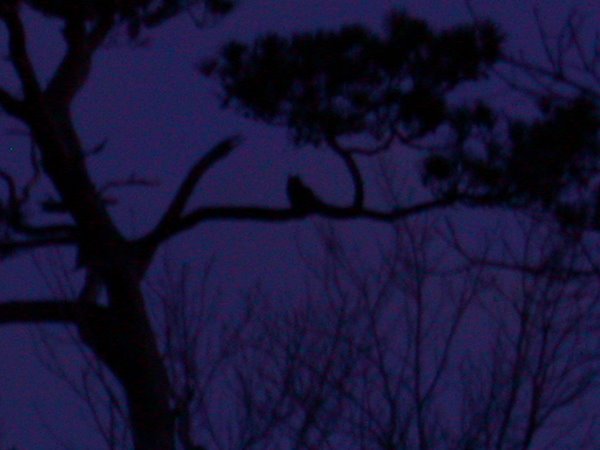
Careful examination of color-marked birds is critical. [Is there an echo in this blog?] Was the green flag not visible to you? Others had the same observation. This afternoon Terry Jenkins provided me with this third photograph which shows the green flag distinctly.
As it turns out, looking at Terry's Piping Plover may be good practice for coastal Virginia shorebirders this spring. In recent years there has been little marking of the threatened Atlantic population of Piping Plovers. The endangered Great Lakes and Northern Great Plains populations have been widely marked (and re-sighted from Oregon Inlet, NC to the south Texas coast) for many years as part of the recovery effort.
Recent winter census efforts have found significant numbers of Piping Plovers wintering in The Bahamas. [Smart plovers, especially this winter.] To which of the three Piping Plover breeding populations these birds belong is unknown, although it is suspected that they may be from Atlantic Canada: Prince Edward Island, Nova Scotia, New Brunswick and the Magdalen Islands (Quebec) in the Gulf of St. Lawrence. In any event, the Canadian Wildlife Service has funded and partnered with The Bahamas government and The Bahamas Trust in a project to capture and color mark up to fifty plovers wintering on several islands in The Bahamas this January and February. Each plover captured will have a plastic black flag placed on an upper leg together with a unique combination of plastic color bands on their lower legs. There will be no metal bands placed on the birds.
Come late March to mid-April some of these marked plovers may stop along the mid-Atlantic coast. Two plovers were seen by a CVWO volunteer on the Chesapeake Bay beach at First Landing State Park on April 16, 2009. Other plovers are seen annually on spring migration along the Back Bay beaches and at Chincoteague NWR. With luck and vigilance you could find a banded plover as did Terry. Have your optics ready and your camera at your side.





